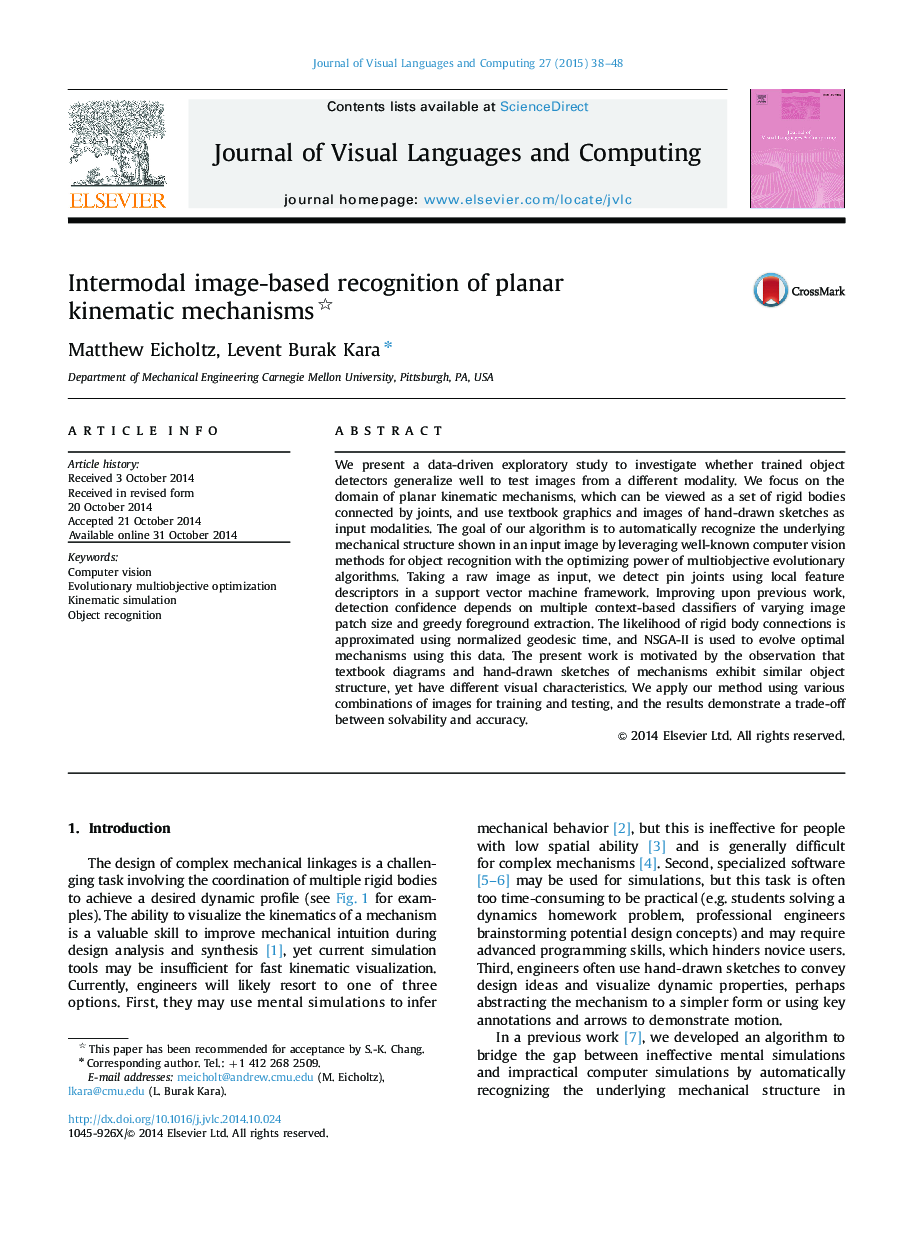| Article ID | Journal | Published Year | Pages | File Type |
|---|---|---|---|---|
| 523405 | Journal of Visual Languages & Computing | 2015 | 11 Pages |
•We describe a system that automatically recognizes mechanical structures from images.•Contextual features and foreground extraction enhance previous detection results.•We extend the recognition pipeline to include hand-drawn sketches as input.•Trained object detectors can perform well on images from a different modality.
We present a data-driven exploratory study to investigate whether trained object detectors generalize well to test images from a different modality. We focus on the domain of planar kinematic mechanisms, which can be viewed as a set of rigid bodies connected by joints, and use textbook graphics and images of hand-drawn sketches as input modalities. The goal of our algorithm is to automatically recognize the underlying mechanical structure shown in an input image by leveraging well-known computer vision methods for object recognition with the optimizing power of multiobjective evolutionary algorithms. Taking a raw image as input, we detect pin joints using local feature descriptors in a support vector machine framework. Improving upon previous work, detection confidence depends on multiple context-based classifiers of varying image patch size and greedy foreground extraction. The likelihood of rigid body connections is approximated using normalized geodesic time, and NSGA-II is used to evolve optimal mechanisms using this data. The present work is motivated by the observation that textbook diagrams and hand-drawn sketches of mechanisms exhibit similar object structure, yet have different visual characteristics. We apply our method using various combinations of images for training and testing, and the results demonstrate a trade-off between solvability and accuracy.
